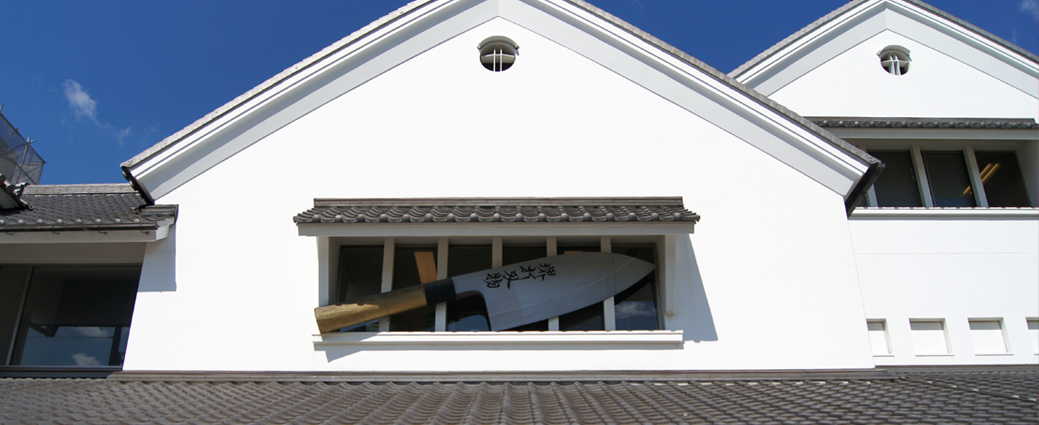Sakai Knife Museum
The area of Sakai in the outskirts of Osaka has a long tradition and history of knife making. During the Edo Period, following the end of the Samurai wars, blade makers began producing knives for cooking and, following its first import, knives used for cutting tobacco. The tobacco knives produced by the craftsmen of Sakai so impressed the Shogun that they were awarded special status that effectively allowed them to to create a monopoly at the time and cemented their position as the nation’s premier producers of bladed cutlery.
Now known throughout the world for the quality of their chef’s and other cooking and utility knives, there are various methods for forging and laminating these blades, but the result is a strong and resilient body which exposes an edge that can take on razor sharpness. By the time a high quality Japanese knife has reached that stage of composition and shaping, it will already have passed through the hands of two or three master craftsmen. When it is ready to be ground and sharpened, it goes on to others.
Like the samurai’s katana, most Japanese kitchen knives have a single-ground edge. This means that the angle along the cutting edge is twice as acute as a double ground blade, with the same bevel on both sides and this characteristic gives the Japanese knife a sharper edge than others.
Today, a plethora of different shapes and sizes of Sakai cutlery are made Most have very specific uses such as the sushi-kiri, reminiscent of a scimitar, used for slicing rolled sushi, or the little spikes that are used to fix the heads of eels to a chopping board before they are filleted. You can get a good idea of the extent by visiting the Hamono Museum in Sakai where examples fill the showcases and where you can watch the craftsmen at work.
Contact us
Tel: 01865 841443
Fax: 01865 841445
Into Japan Specialist Tours
The Dovecote, Manor Farm, Ball Lane, Tackley, OX53AG


